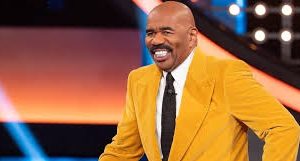2024-11-06T07:00:31+07:00VnExpress
The unknown from silent voters in the US election
“Your choice on the ballot is secret. No one knows who you chose on the ballot. What happens in the voting booth is known only to you,” actress Julia Roberts said in a television ad ahead of the US presidential election.
The message was widely circulated and was intended by Roberts to reassure women who support Vice President Kamala Harris that they can vote for her without anyone knowing about their choice, not even their family members.
Banners calling for support for former President Donald Trump and Vice President Kamala Harris outside an early voting site in Charlotte, North Carolina, on November 2. Photo:
Reuters
But what if these silent voters also hide their preferences from pre-election polls?
If the polls don’t accurately reflect the true preferences of some women, who make up more than 50 percent of voters, it means reports that the two presidential candidates are headed into Election Day neck-and-neck may be inaccurate.
This is just one example of how polls can miss or fail to detect potential support groups for candidates.
When pollsters sought to explain why they failed to predict Donald Trump’s victory in 2016 and continued to underestimate him in 2020, the answer many offered was that there were Republican supporters who were wary of civic institutions and thus concealed their true voting intentions. They were called “Trump silent voters.”
Some election strategists say the opposite could happen in this year’s White House race, with pressure in some pro-Trump communities so strong that voters who don’t support him, especially women, are now reluctant to reveal their true intentions.
“I don’t have direct evidence of this, but in this extremely tense atmosphere, it’s understandable that a significant proportion of women voters would not want to disclose to their loved ones and even to pollsters their intention to vote for Harris,” said Mark Putnam, a Democratic campaign expert, adding that social pressure could also lead some men to hide their intention to vote.
Nỗ lực khuyến khích “những cử tri thầm lặng của Harris” đi bỏ phiếu đã khiến Trump chú ý. Ông hôm 2/11 chỉ trích quảng cáo của nữ diễn viên Roberts, do nhóm Vote Common Good sản xuất.
“Bạn có thể bỏ phiếu theo bất kỳ cách nào bạn muốn và sẽ không ai biết được”, Roberts nói trong quảng cáo khi hai phụ nữ có vẻ đang đánh dấu lá phiếu của họ cho Phó tổng thống Harris, mặc dù chồng họ kỳ vọng họ ủng hộ cựu tổng thống Trump.
Thông điệp này được hưởng ứng bởi nhiều người ủng hộ Harris khác, trong đó có hạ nghị sĩ Cộng hòa Liz Cheney.
Niềm tin rằng phụ nữ có thể che giấu lựa chọn trên phiếu bầu của họ một phần xuất phát từ kinh nghiệm từ những nhân viên đảng Dân chủ đến gõ cửa từng nhà vận động cử tri, một nhà thăm dò ý kiến cho chiến dịch Harris giải thích. Theo một số nhân viên chiến dịch, đôi khi những người chồng không cho vợ mình nói chuyện với họ.
Nhưng cũng có khả năng các cuộc thăm dò lại tiếp tục đánh giá thấp động lực ủng hộ dành cho cựu tổng thống Trump. Một dấu hiệu cho điều này có thể được tìm thấy từ cuộc khảo sát của New York Times/Siena College ở các bang chiến trường hôm 3/11, trong đó phát hiện ra rằng những người da trắng ủng hộ đảng Dân chủ có khả năng tham gia thăm dò cao hơn những người da trắng theo đảng Cộng hòa. New York Times cho biết phát hiện này có thể báo hiệu rằng những cuộc thăm dò không nắm bắt được hoàn toàn xu hướng ủng hộ đối với Trump.
Mặt khác, nhiều đơn vị thăm dò ý kiến xây dựng khảo sát của họ dựa trên các cuộc phỏng vấn với những cử tri đã đăng ký, những người có tên trong danh sách cử tri ở mỗi bang. Nhưng một số bang chiến trường cho phép mọi người đăng ký cử tri và bỏ phiếu vào đúng ngày bầu cử, trong số đó có Wisconsin, Michigan và Nevada. Bắc Carolina cho phép đăng ký cử tri trong thời gian bỏ phiếu sớm.
Vì thế các nhà thăm dò ý kiến có thể đã bỏ lỡ cơ hội nói chuyện với những người quyết định bỏ phiếu muộn này, vì họ không xuất hiện trong danh sách cử tri cho đến ngày cuối cùng.
Năm 2020, khoảng 68.000 người đã đăng ký bỏ phiếu tại Wisconsin vào ngày bầu cử, theo L2, tổ chức phi đảng phái thu thập danh sách cử tri từ các bang. Con số này vượt xa biên độ chiến thắng của Tổng thống Joe Biden tại Wisconsin là khoảng 20.700 phiếu.
In Michigan, about 14,600 people had registered by Election Day 2020. In Nevada, the number was closer to 10,000. Both states are considered battlegrounds in this year’s election.
Pollsters have long thought that early-campaign surveys inflated support for independent candidate Robert F. Kennedy Jr., nephew of the late U.S. President John F. Kennedy, and other third-party candidates.
History shows that voters often “cast their vote” provisionally for such an independent candidate while they consider their real choice. They then switch to voting for one of the two major party candidates who has a real chance of winning.
Support for independents has dropped significantly from 15 percent in a
Wall Street Journal
survey of battleground states in March, with Kennedy at 11 percent. But Kennedy’s final support could be significant in a tight election like this one.
A poll released by Iowa on November 2 confirmed that Kennedy is still drawing votes, about 3% in the state, despite abandoning his presidential campaign. This is a worrying sign for Republicans, as multiple polls this year have shown Kennedy drawing more votes from Trump voters than Harris when he was offered as a choice.
Kennedy remains on the ballot not only in Iowa, but also in Michigan and Wisconsin. Last week, the Supreme Court rejected his own last-minute request to remove his name from the ballot in those two states.
Meanwhile, Green Party candidate Jill Stein is still on the ballot in many battleground states and is also likely to siphon votes away from Ms. Harris.
Polls have painted a mixed picture of whether independents are doing more damage to Harris or Trump, with a poll released by
NBC News
on Nov. 3 cautiously suggests that Harris could be hurt more.
The poll found the two candidates tied among registered national voters in the in-person vote, but Trump had a one-point lead when independents and third-party candidates were included. The poll, however, did not account for silent voters who may support Harris or Trump but have not said their preference.






